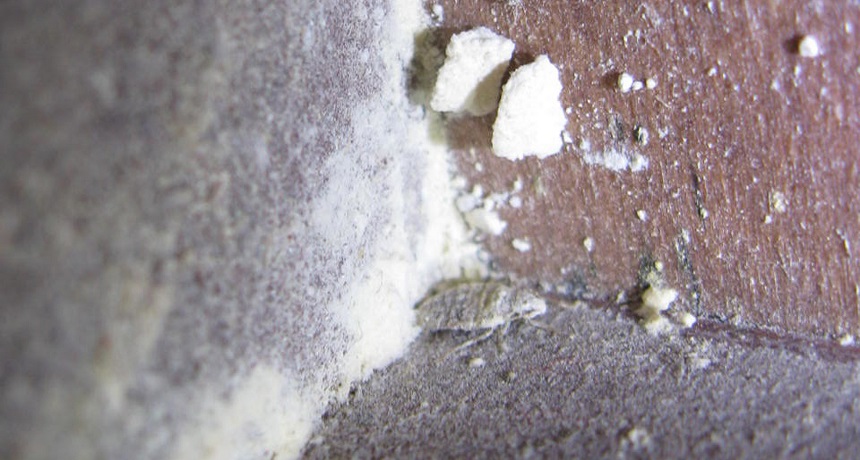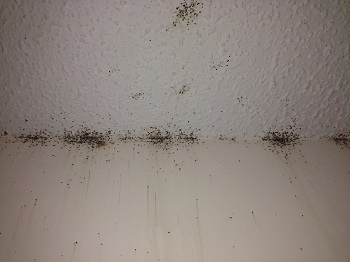Explainer: Eek — what if you get bed bugs?
No need for panic or embarrassment — just action

Bed headboard treated with diatomaceous earth to control a bed bug infestation. (This image has been cropped.)
NY State IPM Prog. at Cornell Univ./ Flickr (CC BY-NC 2.0)
By Brooke Borel
Oh no — you think you have bed bugs? First, don’t be embarrassed. Keep in mind that people have had to deal with these pests for thousands of years. The insects are so common that they’ve plagued even kings and queens.
If bed bugs have moved in, you may start getting suspicious bites. You also may be able to spot the critters. Bed bugs like to squeeze into tight places. Usually they hide in bedrooms, so begin there. Start by inspecting your mattress. Look along its seams. Also check your headboard and bedframe, and any other potential hiding places near your bed. You may not always be able to see them because they are so good at hiding. If you are getting bitten, even if you can’t find any bed bugs, your family should call a professional. If you rent your home, the landlord may be responsible for paying for an exterminator (although that depends on the rules in your community).
Before the pest control company arrives, you should wash all of your clothes and bedding in hot water. (First, make sure the materials can handle high temperatures.) Then machine dry everything at a high temperature. Afterward, seal all those clothes and bedding in plastic bags or plastic boxes. That will keep bed bugs from infesting everything again while you treat the rest of your home. Vacuum your home really well, too, and get rid of clutter. If you live in an apartment, your neighbors may have to do the same things. Bed bugs spread easily between apartments in a single building. So if you have bed bugs, your neighbors might too. If you treat your apartment and your neighbors don’t, their bed bugs might spread back to your home.

Warning: Don’t use insecticides or heat treatments on your own. Some people who have tried to get rid of their bed bugs have ended up poisoning themselves. Others have burned down their houses. When in doubt about what to do, call in an experienced professional.
The best way to deal with bed bugs, of course, is to avoid getting them in the first place. So when you travel, inspect your hotel bed for the bugs just as you would if you thought you had them at home. Don’t put your suitcase or other belongings on hotel beds, because that may make it easier for the insects to hitchhike home with you. And do your laundry with hot temperatures just as soon as you get home. Finally, don’t forget to wash or heat your luggage too, if possible.
Brooke Borel is the author of a new book on bed bugs.







